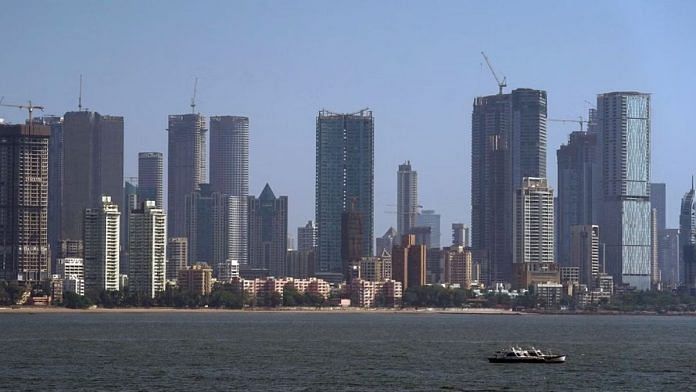As cities become bigger and more densely populated, leaders across the public-private spectrum have been on an increasingly urgent search for spaces that can be redeveloped with an emphasis on social and environmental values. A seemingly ideal candidate has emerged in the form of abandoned airports and airfields, also known as ‘ghost’ airports. For many cities, especially the mature ones, ghost airports represent the last large-scale, blank slates that can be reintegrated into urban spaces.
How many ghost airports are there globally? Estimates vary, but one popular online database lists 2,699 mostly or completely abandoned airports and airfields in the US alone; a separate Europe-focused database reveals several hundred more.
Apart from black swan events such as pandemics, why are airports and airfields abandoned? In many cases, smaller airports are simply replaced by bigger “hub” airports to accommodate growing demand. Many others are decommissioned for passenger traffic and converted into military, commercial or shipping facilities.
Some are victims of externalities such as projected population booms that never materialize, natural events that critically harm infrastructure or wars that wreak irreparable damage. More controversially, some simply suffer from poor upfront planning and become ghosts from their very inception, never servicing a single passenger. The construction of an airport on the outskirts of Mexico City, for example, was never completed, and the remnants are now being turned into a massive ecology park on a historic site larger than Paris.
Redeveloping ghost airports
Ghost airports that do pass muster can be redeveloped for many purposes, but some of the most impactful efforts fall into three categories.
1. The new urban megacluster
The Ellinikon is a former ghost airport that is now evolving into a whole new urban cluster. Four miles outside central Athens, Ellinikon International Airport was in service for 63 years before it was replaced by Athens International Airport in 2001. It lay mostly dormant for two decades before citizen activism, and a public-private collaboration began to envision new possibilities for the 6km² space. Work on this $8.2 billion project is ongoing, and its plans encompass development for residential, commercial, hotels, entertainment, museums, health, sports and education purposes. Sustainability and conservation initiatives are core to the effort: energy-efficient buildings and regeneration of the coastal waterfront are critical aspects of the project. Economic benefits to Greece from increased tax revenues and tourism are projected to be more than €14 billion. Notably, it will see the first large park built in Athens’ 3,400-year history.
2. Central business district 2.0
Those who used to fly into Hong Kong’s Kai Tak Airport, closed since 1998, fondly remember the eye-opening descents with planes almost brushing against buildings on their glidepath to the runway. When its capacity no longer met demand, Kai Tak was replaced by Hong Kong International Airport, which was built on reclaimed land 30km to the west. Since the late 1990s, the Kai Tak area has been the focal point of public-private development efforts to transform it into a new central business district. The lack of existing vertical infrastructure – the “blank slate” advantage of ghost airports – has created space for innovative social and environmental developments such as Airside, a new ultra-green complex featuring sky farming, automated smart waste sorting and storage, natural ventilation, rainwater management and an automatic bicycle parking bay.
3. Urban technology, research and residential hub
Berlin-Tegel Airport, situated just 9km from the Brandenburg Gate, has had a vivid history that goes well beyond the bounds of its 73 years of formal operation, from 1948 to 2021. Prior to World War I, it served as a Zeppelin airship assembly facility. It was destroyed by Allied bombing during World War II and then reconstructed to become Berlin’s busiest passenger airport. Even after its decommissioning, it served as a COVID-19 vaccination centre and shelter for refugees fleeing Ukraine.
Today work is underway to transform the site into Berlin TXL — the Urban Tech Republic: part research and industrial park for urban technologies, part residential district and part landscape zone. Use of climate-neutral energy systems, mobility networks and building materials is a core design priority, with a 5,000-unit residential development slated to become the largest timber construction district in the world.
Design principles for airport redevelopment
These prominent examples of converted ghost airports show the outer edges of what’s possible when future-focused ambition meets public-private vision and resolve. Yet, even more modest redevelopment projects should embody fundamental design principles that can de-risk development and increase long-term positive impacts:
- Design for inclusion: ghost airports located near cities – many with a shortage of affordable housing – present a powerful opportunity to bring socioeconomic equity right onto the drawing board.
- Design for sustainability: all airport redevelopment efforts should have climate-neutral principles at their core, from build through to operations and beyond.
- Design for resilience: diversifying revenue streams, strengthening resource self-sufficiency and hardening digital infrastructure can help these new spaces withstand threats both inadvertent (such as economic busts) and intentional (such as cyberattacks).
- Design for distinctiveness: perhaps more importantly, they must have a culture, a vibe and a sense of place all their own – in effect, a personality that pervades the full spectrum of life, work and play.
It’s exciting to think that hundreds, if not thousands, more ghost airports are still out there, waiting for their metamorphosis. When designed with these principles in mind, these ghosts can bring the housing, parks and other social infrastructure that cities need now more than ever.



